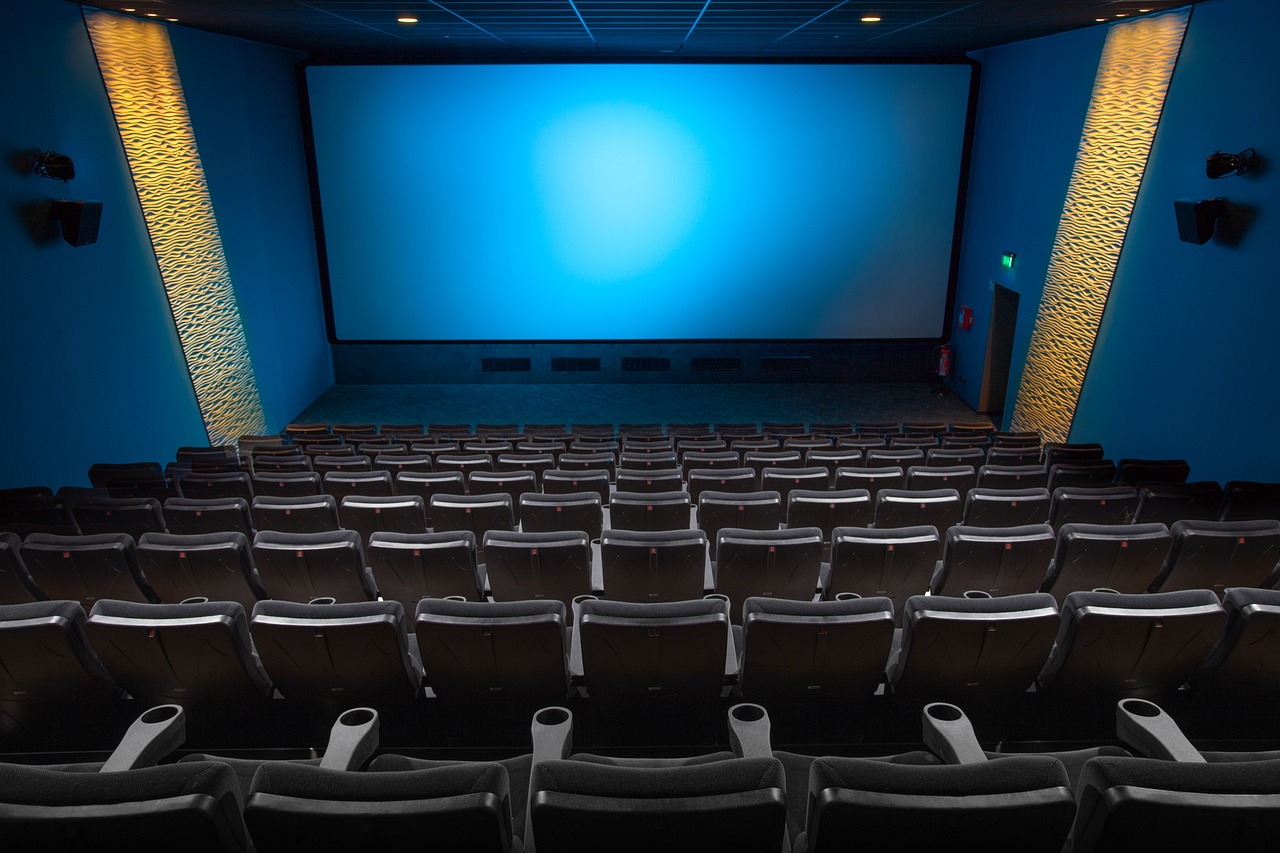At its core, a Build Perfect Home Theatre System is an arrangement of electronic components designed to recreate the experience of watching a movie in a cinema. This includes a display for visuals, an audio system for sound, and a media player to stream or play content. With the right combination of these elements, you can create an immersive environment in the comfort of your home.
Components of a Home Theatre System
To craft the ultimate setup, you’ll need to understand the key components:
- Display: There could be a projector or a TV. It’s the centrepiece of your home theatre system, so choose wisely.
- Audio System: Surround sound speakers or a soundbar with subwoofers to deliver that booming cinema sound.
- Media Player: Blu-ray players, gaming consoles, or streaming devices that play your content.
- Connectivity and Cables: HDMI cables, wireless connections, and the necessary tech to link everything together.
Choosing the Right Display for Your Home Theatre
Types of Home Theatre Displays
Factors to Consider When Choosing a Display
One of the first decisions you’ll need to make is the type of display to use:
- LED vs. OLED TVs: LED TVs are affordable and provide great picture quality, but OLED TVs offer superior contrast and colour accuracy, making them the preferred choice for cinephiles.
- Projectors vs. TVs: For a true cinematic feel, projectors offer large screen sizes, but TVs generally provide better brightness and convenience.

Factors to Consider for Home Theatre Screens
- Screen Size: Your room size and seating distance play a crucial role in determining the perfect screen size. Bigger isn’t always better.
- Resolution and Picture Quality: Opt for at least 4K resolution for sharp, clear images. HDR (High Dynamic Range) is also a must for enhanced contrast and vibrant colours.
- Refresh Rate and HDR: A higher refresh rate (like 120Hz) ensures smoother motion, which is particularly important for gaming and action-packed scenes.
Selecting the Perfect Audio System
Understanding Surround Sound for Home Theatres
To replicate that movie theatre audio, you’ll need surround sound. But what does that mean?
- 5.1 vs. 7.1 Surround Sound: A 5.1 system includes five speakers and one subwoofer, while 7.1 adds two more speakers for a fuller sound. Decide based on your space and budget.
- Dolby Atmos: This advanced sound technology adds height to the audio experience, making it feel like sound is coming from all around you.
Choosing the Best Speakers for Your Home Theatre
- Floor-Standing Speakers vs. Bookshelf Speakers: Floor-standing speakers provide powerful sound but take up more space, while bookshelf speakers are compact and ideal for smaller rooms.
- Subwoofers and Soundbars: A subwoofer adds depth to your sound, delivering those deep bass notes. If space is a concern, a high-quality soundbar can also provide an excellent audio experience.
Picking the Best Media Player
Best Media Players for Home Theatre Systems
If you’re a cinephile who loves physical media, Blu-ray players offer unparalleled picture and sound quality. On the other hand, streaming devices like Roku, Apple TV, or Amazon Fire Stick provide convenience with access to a vast array of content at your fingertips.
Using Gaming Consoles as Home Theatre Media Players
Your gaming console, whether it’s a PlayStation or Xbox, can double as a media player. They support streaming apps and Blu-ray discs, making them a versatile addition to your setup.
Smart TVs with Built-In Media Options
Many modern Smart TVs come with built-in media players, eliminating the need for additional devices. These TVs offer apps for Netflix, Disney+, and more, simplifying your setup.
Ensuring Proper Connectivity and Cable Management
HDMI Cables for Optimal Home Theatre Performance
HDMI cables are the backbone of your home theatre system, connecting your devices to the display. Opt for high-speed HDMI cables that support 4K and HDR to ensure the best picture and sound quality.
Wired vs. Wireless Connections for Home Theatres
While wired connections (like HDMI) provide the most reliable performance, wireless options are becoming increasingly popular for their convenience. Bluetooth and Wi-Fi-enabled speakers reduce clutter and make setup easier.
Effective Cable Management for Home Theatre Systems
No one likes a tangled mess of cables. Invest in cable management solutions like clips, sleeves, or even a cord cover to keep your setup tidy and safe.
Optimizing Your Home Theatre Room Setup
Choosing the Ideal Room for Your Home Theatre
Your home theatre’s location matters. Choose a room that can be darkened easily, is large enough for your setup, and is away from distractions. Basements often make great home theatre spaces.
Acoustic Treatment for Home Theatre Rooms
The quality of acoustics in your home entertainment could either make or break it. Add soft furnishings like carpets and curtains to reduce echo. Consider soundproofing the room to prevent disturbing others in your home.
Best Seating Arrangements for Home Theatre Viewing
Your seating arrangement is key to comfort and immersion. Place seats at the right distance from the screen and consider tiered seating if you have the space.
Enhancing the Aesthetic of Your Home Theatre
Lighting Tips for Home Theatre Systems
- Ambient Lighting: Soft, dimmable lights are ideal for creating the perfect movie-watching environment. Avoid harsh overhead lights that cause glare on the screen.
- Smart Lighting Systems: Control your lighting with a touch of a button using smart lighting systems. You can even sync the lights with your movie for a dynamic experience.
Furniture and Decor Ideas for Home Theatres
- Recliners vs. Sofas: Comfortable seating is a must. Recliners offer a true cinema feel, while sofas are great for lounging during long movie marathons.
- Themed Decor Ideas: Want to go all out? Decorate your space with movie posters, LED strip lights, and even popcorn machines for that authentic cinema vibe.
Future-Proofing Your Home Theatre
Investing in Future-Ready Home Theatre Technology
To keep your home theatre relevant for years to come, invest in 4K and even 8K technology. While 8K content is still limited, it’s worth considering if you want to stay ahead of the curve.
Preparing for Emerging Streaming Services in Home Theatres
Streaming services are constantly evolving. Ensure your setup is compatible with the latest apps and services to avoid any disruptions in your viewing experience.
Staying Updated with Home Theatre Trends
Stay informed about the latest audio and video trends, such as advancements in Dolby technologies or the emergence of new display tech. This helps you to upgrade your system with knowledge and confidence.

Budgeting for Your Home Theatre System
High-End vs. Budget Home Theatre Options
Building a home theatre doesn’t have to break the bank. While high-end options offer the best quality, there are budget-friendly alternatives that can still deliver a fantastic experience.
Where to Save and Splurge in Your Home Theatre Setup
Splurge on components that directly impact your viewing experience, like the display and audio system. Save on things like decor or lesser-used features.
Planning Future Upgrades for Your Home Theatre
If you’re on a budget, start with the essentials and plan to upgrade over time. Prioritize your needs and slowly build your dream home theatre.
Conclusion
Creating the ultimate home theatre system is an exciting journey that blends technology, comfort, and personal taste. By carefully selecting each component and optimizing your space, you can enjoy a cinematic experience right at home. Whether you’re watching the latest blockbuster, gaming, or just binge-watching your favorite shows, your home theatre system will be the crown jewel of your entertainment setup. Remember to keep your system up to date, experiment with new technologies, and most importantly, have fun with it.
FAQs
What is the best screen size for a home theatre?
How big your room is and how far back you sit influences the perfect screen size. As a rule of thumb, multiply the seating distance (in inches) by 0.84 to get the recommended screen size.
What is the optimum expense for a home screening system?
A decent home theatre system can range from a few hundred to several thousand dollars. Your budget should reflect your priorities, whether it’s high-end audio, a large display, or future-proof technology.
Can I build a home theatre in a small room?
Absolutely! Focus on compact speakers, a medium-sized TV or projector screen, and proper acoustic treatment to make the most of your space.
Is surround sound necessary for a good home theatre experience?
While not essential, surround sound significantly enhances the cinematic experience by creating an immersive audio environment.
How do I keep my home theatre system up to date?
Keep an eye on new technologies and consider upgrading components like your media player or audio system periodically. Streaming devices and Smart TVs often receive updates that keep them current.
